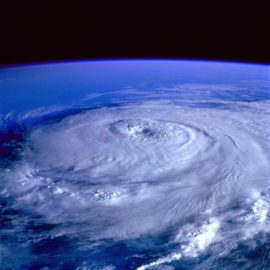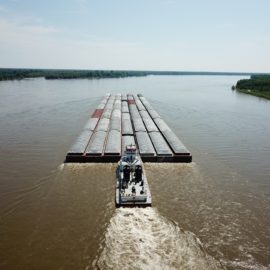
I will eat oysters but they are not a necessary part of my diet. Yet others love them and get them often. This post is for you.
For the first time since the state’s oyster harvest areas were closed as a safety precaution after Hurricane Ida, fresh Louisiana oysters are back on local menus. But a return to pre-Ida supply levels is likely months away, said Empire oyster grower and restaurant owner Mitch Jurisich, who also is chairman of the Louisiana Oyster Task Force. “It’s going to be months before oyster farmers and fishers in west Plaquemines and other locations farther west return to normal,” Jurisich said. “We’re weeks away from having a good supply.”
nola.com
The problem is Hurricane Ida. The waters she disturbed have upset the delicate balance needed for them to grow.
As of Friday, only seven of the 28 oyster growing areas across Louisiana’s coastline had been reopened for harvesting by the Louisiana Department of Health, including five on the east bank of the Mississippi River in Orleans, St. Bernard and Plaquemines parishes, and two on the west bank near Empire in Plaquemines. Slowing that process is the limited number of health department inspectors available to conduct sampling on oyster beds and on the oysters themselves, if necessary. The Louisiana agency has as many as 10 workers conducting inspectors at any given time, which actually is significantly more than any other state with oyster harvesting, said Justin Gremillion, who oversees the oyster testing program. The agency follows guidelines established by the National Shellfish Sanitation Program to determine if the oysters are free of contaminants like sewage or pollutants. Those guidelines also could help speed the clearance of the remaining areas where there’s no clear sources of pollutants, he said. “If the waters return to normal temperatures for this time of year, to the normal salinity levels, you can count that after 21 days in its lifetime, an oyster can purge itself. Theoretically, after 21 days, some areas will be able to reopen without sampling and be just fine,” Gremillion said. That would not include areas where there have been any reports of pollutants, he stressed.
That sounds easy enough. The oysters will clean themselves so they can be harvested and eaten. Wait, that is only the first step.
But the health clearances is only the first step for oyster growers in what is expected to be a very slow recovery process. The oyster harvesters living in the parishes hit worst by Ida are dealing with damage to their homes, businesses and boats. All add to the time it takes to get oysters into restaurants. “Oysters have been very, very difficult to get,” said Tommy Cvitanovich, owner of the six-location Drago’s Seafood Restaurant. “On Monday, Louisiana oysters came back into the pipeline, and we were able to serve fresh oysters on Tuesday. Obviously, they were a bit more expensive. But that’s the end of the good news.” Paul Rotner, chief executive of the Acme Oyster House chain, agreed. “The biggest challenge after every storm is always availability,” he said. His chain uses 8 million fresh oysters and fries up another 3.5 million a year. Once power was restored in New Orleans and at other Acme locations after Ida, the chain turned to Virginia oysters for a time to fill the gap.
Some oysters are beginning to come back on the market.
By Friday, Acme was again serving Louisiana oysters from three of the areas that were reopened by the Health Department. “In a week, we can go through 150 sacks of oysters in one restaurant, but with the storm, business has slowed down, especially in the French Quarter,” Rotner said, as well as in Metairie, Baton Rouge and even at its Texas restaurant. “The state immediately closes down all the beds in case of sewage and what not, basic precautionary reasons. We expect that after every storm,” he said. But with Nicholas following so closely behind Ida, that process was delayed even more. Once an oyster grower gets back out on the water, there’s still lots of work before harvesting begins. In a number of locations passed over by Ida’s powerful central storm, with winds near 150 mph, both “flotant” – floating marsh grasses – and the mud in which it was rooted have ended up covering growing oysters. Growers will have to determine what areas are badly hit and attempt to rake off the worst of the mud and grass to assure their oysters don’t suffocate before being harvested in the weeks and months to come.
It is not just the growers, but also the state regulators.
All of the same issues affecting commercial oyster growers also have slowed efforts by the state Department of Wildlife and Fisheries to clear the 1.7 million acres of public oyster beds for use. Those oyster beds, once open, will be subject to capture of sacks of grown oysters by commercial fishermen, and, equally important, of seed or “spat” oysters, which growers capture and relocate to their own oyster beds to create new crops. “The problem is Hurricane Ida was so powerful that it was not just a natural disaster, but also a disaster for all of our employees, for our state buildings,” said Carolina Bourque, oyster program manager for the wildlife agency. “We have employees who are still trying to fight with their insurance companies, or still out of town, waiting for electricity to be restored.” The good news for the public beds, she said, is that there seems to be a mix of areas where no damage was done by the storm, with some areas experiencing the same covering by mud and grass as has occurred on private leases. “We haven’t sampled all the reefs yet, especially in Terrebonne and Lafourche parishes,” Bourque said. “But I expect we’ll still have a decent oyster season if dealers in the area are able to get their power back and are able to begin operations.”
The state is also gathering information so there can be a request for federal support.
The state also has already begun collecting information aimed at requesting a federal emergency fisheries declaration, which might provide federal money over the next couple of years to add cultch – rocks and shell that oysters can use as anchors – on both the state’s public oyster beds and private leases. One of the hardest hit subsets of oyster growers are members of the new “Alternative Oyster Culture” industry, about six growers that created above-bottom farms of caged oysters in Barataria Bay just north of Grand Isle, said Earl Melancon, a Louisiana Sea Grant biologist and oyster expert. “Whether they were big or small, most of them lost all of their cages and their oysters,” he said. “You’d expect lots of despair, justifiably so, right after the hurricane passed, whether they want to get back in the industry. But I’m amazed at their resilience. They’re all going to try to come back and that’s a good sign.”
This problem may be a blessing in disguise as the Mid-Barataria Diversion is projected to upset the oyster business with the sediment drawn from the Mississippi.
The off-bottom oyster culture efforts are aimed in part at finding alternatives for traditional bottom growth areas that might be made too fresh by the Mississippi River water used to deliver sediment by the state’s proposed Mid-Barataria sediment diversion. But the new growers have some significant obstacles to cross, Melancon said, as there are no present insurance carriers in the state that were willing to provide them with policies. Sea Grant is in the midst of developing a grant proposal aimed at identifying better ways of anchoring the growing cages in the face of weather challenges, Melancon said. “But honestly, in the face of a Category 4 storm, it’s difficult to say that you could have hardening that would handle something like that.” For the oyster industry as a whole, a key question in its recovery from Ida is whether larger oyster houses that contract with smaller growers to move their oysters to market will see those growers return. “A lot of the plant workers and operators are homeless,” he said. “It’s going to be an uphill climb for them to even have a sense of normalcy.”
Oyster lovers soon will be back to the delectable treat but first the oyster beds have to be inspected and cleared. That is happening now.



